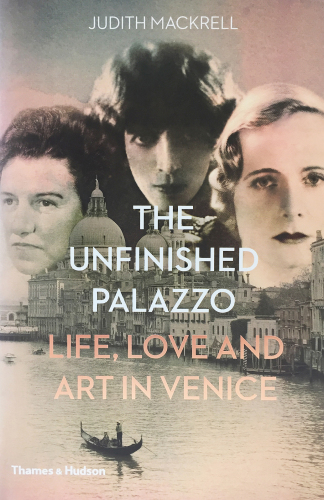
The Unfinished Palazzo
Life, Love and Art in Venice
کتاب های مرتبط
- اطلاعات
- نقد و بررسی
- دیدگاه کاربران
نقد و بررسی

June 15, 2017
Guardian dance critic Mackrell (Flappers: Six Women of a Dangerous Generation, 2014, etc.) connects the lives of three unique 20th-century women.These exceptional women--Luisa Casati, Doris Castlerosse, and Peggy Guggenheim--found a freedom in Venice that was not available elsewhere in Europe or America. The city was welcoming to all sorts of strange and wonderful people. The construction of the Palazzo Venier began in the mid-18th century as a tribute to a powerful Venetian family, but financial difficulties and failure to produce an heir left a building only one story high and two rooms deep--hence, unfinished. Casati found the near ruin and saw it as a place of poetic mystery. She rented it in 1910 and, leaving the exterior derelict-looking, transformed the interior and garden into a showplace for her soirees and a home for her pets, which included a boa constrictor and cheetah, among others. She was always on show, daring but superficial. The author suggests that Casati may have had Asperger's syndrome, explaining her idiosyncratic behavior, but she lived the aesthetic life, making her life a work of art to cover her inability to express herself. It was Casati who truly brought the palazzo to life; she had a great deal of money, which she spent easily. Not so her successor Castlerosse, who went from a shopgirl in London to a professional mistress. Her connection to the palazzo is relatively minor compared to Casati's; Castlerosse's friend bought it for her in 1938 and hosted only one ball before World War II interfered. Guggenheim is the most intriguing character in the narrative, which occasionally falls victim to bloat. Her love of Venice brought her to the palazzo in 1948 to house her modern art collection, making it one of the most-visited attractions in Venice. The book is well-written, but the sexual escapades and personality disorders of the principals take so much space that it degenerates into a gossipy tell-all.
COPYRIGHT(2017) Kirkus Reviews, ALL RIGHTS RESERVED.

September 1, 2017
Venice's Palazzo Venier, an incomplete, neglected structure built in the mid-1700s, reflected the rise and fall of its namesake family. In the 20th century, three remarkable women resided there. Mackrell (Flappers: Six Women of a Dangerous Generation) explores their eventful lives, beginning early in the century with the highly eccentric Marchesa Luisa Casati, a self-proclaimed living work of art whose extravagant parties at the palazzo were notorious. Lady Doris Castlerosse followed in the 1930s, a seductive salonniere who attracted famous names in the arts, entertainment, and royal society. Finally, Mackrell introduces American heiress Peggy Guggenheim, who purchased the Venier after World War II, reworking it into a home for her modern art collection that evolved into a museum. The women differed in many ways, but Mackrell points out their similarities in motivation, independence, daring unconventionality, and historic roles in Venice and social culture. Her astute commentary is particularly illuminating, enlarging the reader's understanding of these individuals and the larger framework of their worlds. VERDICT This work skillfully weaves historical details into absorbing biographical profiles while also capturing the charm of Venice. Well-chosen photographs and comprehensive notes and bibliography enhance the volume.--Carol J. Binkowski, Bloomfield, NJ
Copyright 2017 Library Journal, LLC Used with permission.




















![Design Like You Give a Damn [2]](https://dl.bookem.ir/thumbnails/150/ISBN13/9781613122860.jpg)




دیدگاه کاربران